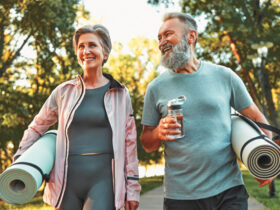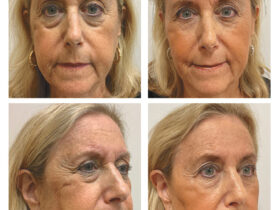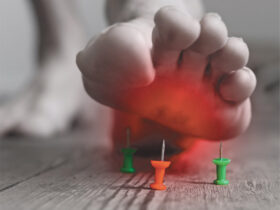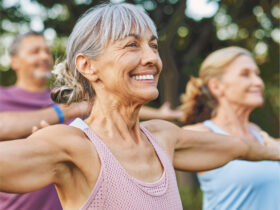By Dr. Anita Grassi
All of us have experienced a sunburn in the past, most likely in childhood. Even people who are careful with sun protection can forget to wear sunscreen on cloudy days, neglect to reapply after swimming or miss those hard-to-reach spots.
What exactly is a sunburn at the cellular level? A sunburn is a first or second degree burn that is caused by ultraviolet radiation. Overexposure to sunlight starts a cascade of events in the skin including dilation of blood vessels producing redness, release of inflammatory mediators that create swelling and eventual death with elimination of the damaged skin cells. Clinically the result is redness that begins about 3-5 hours after exposure, peaks at 24 hours and subsequent peeling of the superficial layer of skin. If the sunburn is more severe, then blistering may occur, indicating a second-degree burn involving the deeper dermal layer of skin. Blistering sunburns take longer to heal and can leave discoloration.
The treatment of sunburn is mostly directed at relief of the associated symptoms of redness, heat, pain and swelling. Once the skin cells have been damaged, they are destined to slough off. There is little to do to reverse that process. If you do develop a sunburn, take the following steps:
• Get out of the sun right away and keep the affected area covered and protected from additional sun exposure as it heals.
• Try cool baths or soaks. Colloidal oatmeal baths with products such as Aveeno may be particularly soothing.
• Apply bland moisturizing creams to the sunburn daily. Ointments although soothing are occlusive and may make the skin feel even warmer.
• Drink water to prevent dehydration.
• Take an over-the-counter, non-steroidal anti-inflammatory drug (NSAID) such as ibuprofen (Motrin, Advil) or aspirin to reduce pain and swelling
• Don’t pick! Peeling off blisters increases the risk of both infection and discoloration. Likewise avoid loofahs or exfoliation. Instead moisturize the skin and allow it to slough off naturally.
• If the skin becomes itchy as it peels, consider an over-the-counter oral antihistamine.
• Avoid topical products containing benzocaine or lidocaine for pain relief. They can cause a secondary allergic contact dermatitis in susceptible individuals.
• Although not specific for sunburn, over-the counter topical 1% hydrocortisone cream may reduce the swelling and discomfort. Stronger topical steroid creams may be prescribed by your doctor.
• If you experience systemic symptoms such as chills, fever or have an extensive area of skin covered with blisters, such as an entire back, call your doctor. This is especially true for children.
Sunburns are best prevented in the first place. Repeated sunburns damage cellular DNA which promotes premature aging, wrinkles, brown spots, precancerous actinic keratoses and skin cancers including melanoma. Studies have shown that more than 5 blistering sunburns between the ages of 15-20 increase the risk of melanoma by as much as 80%.
It is intuitive that people most at risk for sunburn are those with fair skin, red to blonde hair and blue eyes. Remember other risk factors that contribute to sunburn such as:
• Medications–Common medications including antibiotics (doxycycline, Bactrim, ciprofloxacin), blood pressure medicines (HCTZ), and retinoids can increase sun sensitivity.
• Reflection–Highly reflective surfaces such as water and snow increase exposure to the sun’s rays. Shade only protects against direct sunlight. If seated under an umbrella at the beach, 20% of sunlight is still reflected from thesand. On a boat, 10% is reflected from the water and an additional 10% from the boat itself. Fresh snow reflects up to 90% of ultraviolet radiation.
• Cloud coverage– Be careful on cloudy days! Cloud coverage is not necessarily protective and may actually enhance UV radiation due to scattering of light.
• Latitude–UV levels increase closer to the equator.
• Altitude–UV radiation increases 4% for every 1000 ft. increase in elevation. Denver at 5280 ft. elevation (“Mile High City”) has 20% higher UV radiation than at sea level.
Practice good sun habits. Protect yourself from both the acute and long-term consequences of sunburn. Avoid peak midday hours, wear sun protective clothing, hats, sunglasses and regularly apply broad-spectrum sunscreens with SPF > 30 such as EltaMD UV Clear or the more water-resistant EltaMD UV Sport.
Skin Wellness
239.732.0044
www.SkinWellnessFlorida.com









